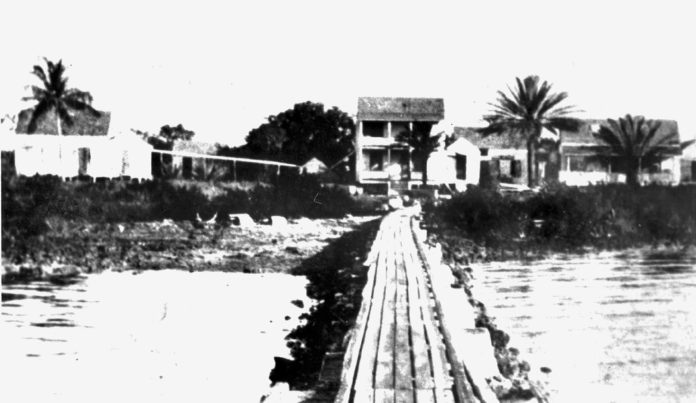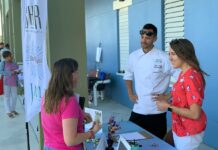The pineapple was a New World treat allegedly “discovered” during Christopher Columbus’ second voyage to the New World. According to the story, on November 4, 1493, a landing crew from one of the expedition ships came ashore at an unidentified island. Columbus named the island, found 300 miles southeast of Puerto Rico, Santa Maria de Guadeloupe.
After coming ashore, the landing crew observed a small village that appeared recently and suddenly deserted. The crew found colorful parrots and an exotic fruit “that looked like green pine cones but were much larger and were filled with a solid pulp, like a melo, but were much sweeter in taste and smell.” Columbus called it pina de Indes. Pina is Spanish for pine cone.
The first to taste it was those men who accompanied Columbus on the voyage, and they would not be the last. Among the other things Christopher Columbus has been credited with, right or wrong, is introducing this exotic New World fruit to European palates. In the Florida Keys, some 360 years later, “pines” as the early pioneers called them, became an important cash crop for local farmers.
Andrew Canova, the author of “Life and Adventures in South Florida” (1885), visited the Florida Keys in 1880. He wrote: “On different portions of Upper Matecumbe, in May, 1880, were little patches of deep soil, called by the inhabitants ‘Red Holes.’ These curious spots are from 15 to 30 feet in diameter and take their name from the peculiar, reddish color of the soil contained in them. Scarcely any rocks are found in these spots, and the fruit growers select them on that account as a place to plant bananas and tropical fruit trees. . . . Messrs. Pinder and Saunders were raising pineapples and made immense shipments in 1881 and 1882. The manner of cultivation was peculiar. No hoe could be used because of the shallowness of the soil. The plants were set 18 inches apart, and left mostly to themselves. One weeding was considered sufficient. . . . On Plantation Key a Mr. Low had a pineapple and coconut grove. The pineapple grove was 30 acres in size and the crop that year was doing so well that he expected to cut at least 96,000 pineapples. . .”
The “red holes” Canova wrote about were filled with African dust. For thousands of years, red, Saharan dust has risen up from the great African desert, been carried aloft across the Atlantic Ocean, and settled on the Florida Keys. In depressions left behind by the island chain’s uneven limestone construction, the dust had accumulated for so long that they became ideal places for farmers to plant when the early pioneers arrived.
One of these pioneer farmers was a Bahamian named Samuel Simon Johnson. At 18, he sailed away from Great Harbor and into the harbor at Key West, where he stayed and met Caroline Tedder. The two married on June 26, 1861. After the 1870 U.S. Census, Samuel and Caroline sailed north to Key Largo with their growing family. Johnson made a homestead claim of 143 acres along the Atlantic coast near the island’s southern end. The Johnsons and their seven children, six boys and one girl, established a series of farms. They grew melons, tomatoes, cucumbers and pineapples, among other crops. The community that grew around them became known as Planter – because it was a farming community, a planting community.
When the Planter Methodist Church was established on November 25, 1887, it became the first permanent church structure in the Upper Keys. The community also established a one-room wooden school and, on December 31, 1891, the Planter Post Office. John Wesley Johnson, the oldest Johnson child, was named postmaster. Mail was not delivered to the post office directly. Rather, the side-wheeled steamship City of Key West brought the mail to the deeper waters just beyond Planter’s shallow harbor, where a crew member placed the day’s mailbag on a hook out in the middle of the water.
Postmaster John Wesley had taken a small boat out to the deeper waters and driven a wooden piling into the substrate one hammering blow at a time. Every day, John Wesley would take the boat out to pick up a bag of incoming mail or drop off a bag of outgoing mail. Also, a small grocery store opened next to the post office.
Because these were boat communities, Planter’s residents established docks that extended from the jagged shoreline and into deeper waters like long fingers. Before Henry Flagler’s Over-Sea Railroad came roaring across the island chain, these finger docks were used to load pineapples and other crops on vessels that could ship them off to market because “pines” were a sweet and delicious treat. They still are.


























